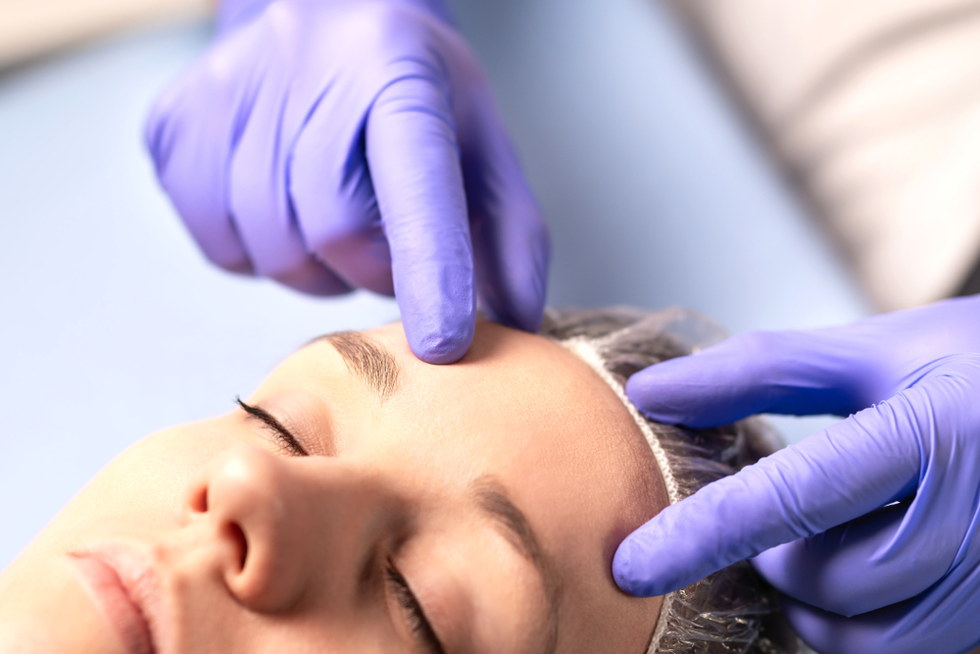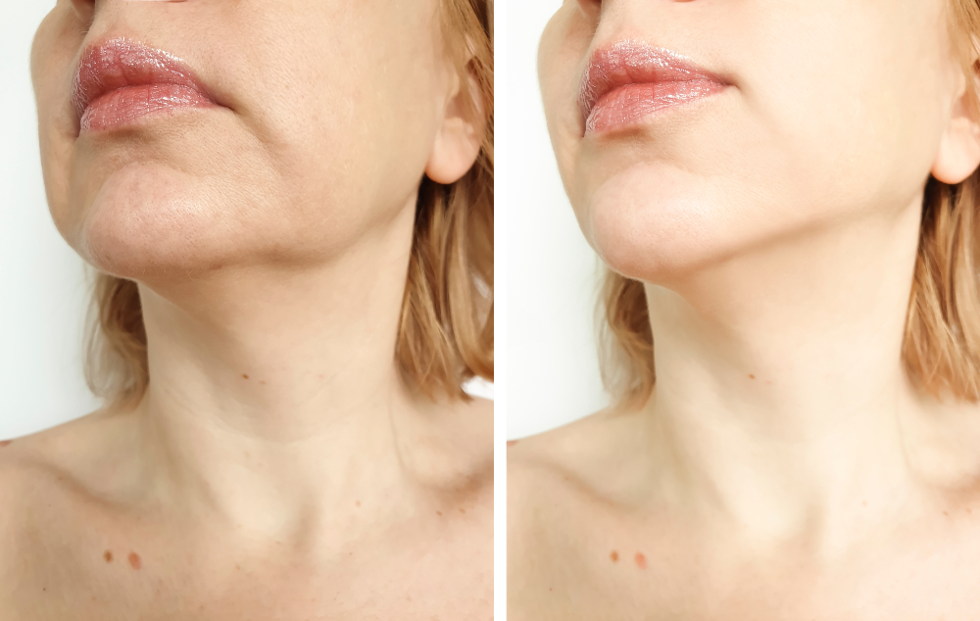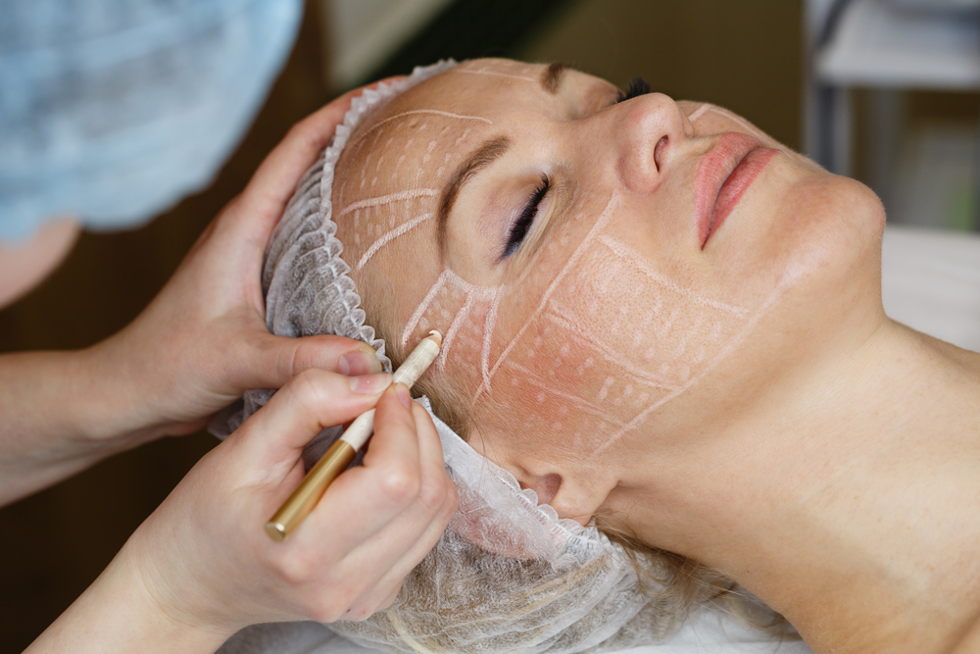Facelift
Published on: 6 Nov 2017, 4:10 p.m.
Mr Debashis Ghosh
NHS Consultant
GMC Number: 4657664

Medically reviewed by a licensed NHS consultant
Last updated: 15/08/2019Get Free & Simple Pricing, Procedure & After Care Information from a Licensed Consultant Now
Photo credit: Olga Ekaterincheva / Shutterstock
Table of contents:
A facelift, commonly referred to as a rhytidectomy is a cosmetic procedure that uplifts, raises and tightens facial skin to reduce signs of ageing and provide a more youthful look. Since elasticity increases in skin as we age, skin can soon begin to sag, with muscles loosening. As a result, common signs of ageing such as wrinkles and hanging skin can soon appear. Individuals that are keen to surgically reverse these signs of ageing can pay for rhytidectomy as it is widely available across the UK and other countries.
Deciding If A Facelift Is Right For You
Who is the perfect candidate for a Facelift?
Most commonly, facelifts are perfect for people who have grown conscious about excessively saggy skin, large wrinkles and deep creases on their face, particularly below their eyelids and around the chin and jaw area. For this reason the ideal candidates for the facelift procedure are individuals aged between 40 to 60, since this period is when they begin to get wrinkled and saggy skin but still have some elasticity to their skin, meaning that the best results can be achieved at this age. Despite this, it is nonetheless possible for individuals aged over 60 to have the procedure. As many celebrities have shown, facelifts are popular amongst both men and women throughout the world.
Fundamentally, the perfect candidate for a facelift is an individual that is seeking more youthful skin and reduces wrinkles and is content with using a surgical procedure to achieve their desired look. It is worth noting, however, that facelifts cannot reduce skin imperfections or flaws such as pigmentation, scarring and damage. Fortunately though, facelifts can be performed alongside the various other cosmetic procedures that address these insecurities.
How Do Facelifts Work?
Since there are different variations of a facelift, there are also different methods of performing a facelift. For example, a traditional-style facelift typically involves an incision at the temples in the hairline which continues around your ears and finishes by your lower scalp. Meanwhile, a limited incision is a slightly shorter incision which finishes at the front of your ear rather than at the lower scalp. Meanwhile, neck incisions are made from the front of an ear lobe to the lower scale and beneath the chin for neck lifts. Broadly speaking, however, the face lift typically involves lifting and tightening the skin tissue and muscles. Often, fat from the facial and neck areas can be moulded, redistributed or removed entirely to give the desired contour effects to an individual’s face. The process then involves replacing facial skin over the affected areas using stitches or tape.
Finding The Right Facelift Surgeon For You
Prior to seeking the right facelift consultant for you, we strongly recommend visiting your regular GP to ensure that you are fit for the procedure and in good health. Any potential medical conditions or complications could result in negative side effects, long term damage and severe complications, so it is vital to consult with your doctor before embarking on the procedure. In the event that your GP does raise concerns about your overall health and the procedure, it is a good idea to enquire with them about safer and more appropriate alternative procedures that give a similar result.
However, if you are suitable for a facelift, finding the best and most reputable surgeon for you is very important and requires a substantial amount of research. To begin your search, consult with friends and family who may have undergone the same or a similar procedure. Alternatively, you can do a great deal of research online by looking at reviews, testimonials and recommendations by individuals on social media. However, it is worth being wary of sponsored and paid advertisements by influencers, since these are often criticised for being a poor reflection of the procedure and consultant. A detailed list of reputable surgeons can be found on databases such as the General Medical Council,British Association of Aesthetic Plastic Surgeons and British Association of Plastic Reconstructive and Aesthetic Surgeons.When looking to choose which facelift surgeon to book with, it is vital to ensure that they have a good track record when it comes to the surgery you want, that they are fully insured and that the surgeon handling your treatment will be fully qualified.
Things to discuss at your consultation:
Once you have completed your research and shortlisted a few surgeons, you should begin booking consultation appointments to discuss the procedure and ask questions. During the procedure, your consultant should do the following:
The consultant should analyse and evaluate your face to determine how feasible the results you want to achieve are and how they plan to complete the surgery to deliver these results.
Good consultants will wish to discuss your expectations at the appointment to get a better idea and understanding of what you want their surgery to achieve so that they can be realistic and discuss potential outcomes.
The consultant should go into detail about the procedure, how it is completed, what technique they use and why this is suitable. They should give you more information about the risks and side effects as well as how they plan to approach aftercare.
The consultant should discuss what the package that they offer includes, the pricing and how payment plans can work, if there are any.
Although it is good practice for the consultant to go into detail about the facelift procedure, it is important also that you ask good questions. By asking these questions to an array of reputable professionals, you are more likely to pick the most suitable surgeon for you based on their answers. In particular, we recommend asking:
Can you show me your qualifications and insurance to perform facelifts?
How much experience do you have as a facelift surgeon
Are you going to lead the surgical team for my facelift?
What facelift technique are you planning to use and why not other ones?
Can I see photos of previous clients having the same facelift technique as me?
In the event of complications, do you provide rectifying treatment and aftercare?
What are your patient satisfaction levels?
What process occurs if I am unhappy with the results of the facelift?
What are the potential disadvantages and side effects of this particular facelift?
Do you recommend any other alternative to achieve the results I want? Why or why not?
Will I be put under anaesthetic? How can I best prepare for a facelift?
How long does the procedure take? Do I need to stay overnight? How long should I take to recover?
The Facelift Treatment
Since facelifts are quite invasive procedures, there are many ways you will be expected to prepare for a facelift.
Before The Day
Firstly, your surgeon will start by capturing plenty of images of your face to examine where best to place the incisions and how to administer the procedure. The surgeon will also ask you to stop habits, such as smoking, prior to the procedure. This is because smoking is proven to increase the risk of complications and hinder healing. What’s more, your surgeon will ask you to conclude taking specific anti-inflammatory and non-steroidal medication two weeks prior to the facelift. These medications, along with any others, will be discussed in your consultation when your surgeon reviews your courses of medication.
On The Day
In the run up to the surgery date, you will be contacted with more specific and detailed instructions on how to approach your surgery date. Most typically, this includes not consuming food or drink for at least 6 hours prior to surgery.
The Procedure Itself

Photo credit: Tero Vesalainen / Shutterstock
Details of the procedure itself can vary from person to person, depending on the severity of the aging and sagging skin. However, it is largely completed as follows:
Prior to the procedure, you will be injected with general anaesthesia.
Firstly, incisions for a traditional facelift are made running from the temples down to and around the ears, trailing back to the bottom of the scalp.
Next, excess skin and often even fat where necessary, is removed from the facial area and underlying tissue is redistributed.
Having removed these, the skin that remains on the face is pulled tightly upwards and backwards to give a more sculpted and contoured look and cover where excess skin was previously.
This is then either stitched, taped or sutured into place, ready to heal.
The only real difference is that for limited incision facelifts, the incision is slightly shorter.
Recovery
Following the procedure, your face will be wrapped up firmly in bandages in order to manage the temporary bruising and swelling, however, these can be removed after a few days. More often than not, individuals stay overnight in the hospital and the bandaging is removed during their stay. In the event that you do not stay in the hospital overnight, you are expected to have either a friend or family member to escort you from the hospital and take you home due to the disorientating effects of general anaesthesia. If this happens, you will need to return to have your bandages taken off.
Likewise, for individuals that have stitches, your surgeon will discuss how and when these will dissolve or arrange for non-dissolvable stitches to be removed roughly a week after the surgery takes place.
For the first few days of recovery, you will need to avoid showering and getting your bandages wet, you cannot drive, you will need to keep your head propped up to reduce swelling and you must avoid any exercise or strenuous activity. Unlike many non-surgical procedures, the recovery period for a facelift is very demanding.
After several weeks since the facelift, you should begin to notice fading of your scars, swelling, bruises and redness. However, you will have to wait roughly 6 to 9 months before the final effects of the facelift are visible. Throughout this period, you will be expected to attend further appointments to monitor your recovery and progress.
There are also some additional aftercare rules you will typically be told to follow after your facelift. These include:
Avoid picking at any scabs that develop
Wear clothes that faster at the front, such as zip up hoodies, and avoid items of clothing which need to be pulled up over your head
Avoid going to the gym, doing any aerobic or strenuous activity
Avoid direct sunlight for a month after the surgery, then apply strong SPF afterwards
Refrain from colouring or bleaching your hair for at least 6 weeks post-surgery
Refrain from applying makeup
Enquire with your surgeon about suitable products such as shampoo ect
Potential Side Effects
Owing to the fact that facelifts are a very invasive and artificial form of treatment, there are numerous potential side effects and complications you should consider and be wary of before embarking on your facelift treatment. In particular, you can suffer the following:
Common Side Effects
Temporary swelling and bruising
Scarring that fades but will never go away entirely
Affected hairlines
Stiff and numb sensation in face for weeks or months
To combat these common side effects, surgeons recommend that you take the recommended dosage of painkillers to limit pain until it eventually goes away. Although these are relatively minor symptoms, it is important to remember that surgical procedures are not always 100% successful, and there are some more serious complications that can occur too.
Serious Complications
Can cause injury to the nerves in your face or certain areas
Scarring can remain visible despite having healed
Can result in some level of hair loss around the incision line
Aesthetically, your face can appear asymmetrical
Wounds can become infected
Can result in blood clots - major and minor
The use of general anaesthesia can trigger an allergic reaction
May result in heavy bleeding.
During your consultation, your surgeon should have discussed the likelihood of these complications, ways that they can be rectified and how dangerous they can become. If you experience any undescribed symptoms or are suffering from extreme pain, it is vital that you contact the clinic where your operation was administered immediately.
Results
What results will I expect to see?
The exact results you should expect to see depend entirely on the kind of face lift you have had. However, overall, you should expect to see tighter, firmer and more contoured skin and shape to your face, depending on the intensity of the surgery you sought.

Photo credit: TanyaLovus / Shutterstock
What if I need revision surgery?
It is not rare for individuals to be dissatisfied with either the care they have received from a surgery or the results of the surgery where these are not what they expected. In this event, you may need a second course of surgery or revision surgery to rectify any mistakes or undesired effects. Often, the complexity of these depends on what is wrong with your initial surgery, but it might be unrealistic to expect revision surgery to return your face to how it was prior to the facelift. If you do require an additional operation, you should follow up on how this will be funded by the surgeon, these are details that should be discussed as early as the consultation meeting.
How Much Does A Facelift Cost?
Due to being cosmetic, facelift procedures are typically carried out in private clinics and hospitals across the country. However, because of this, the cost of a facelift can differ considerably depending on where you live in the UK. For this reason, it may be worth looking at commuting for a facelift that fits your budget best.
Table 1: Cost of Facelift in the UK
| Region | Average Cost of Facelift |
| East Midlands | £6,040 |
| East of England | £5,944 |
| Greater London | £4,700 |
| North East England | £6,040 |
| North West England | £5,303 |
| Scotland | £6,413 |
| South East England | £5,303 |
| South West England | £6,413 |
| Wales | £6,900 |
| West Midlands | £6,040 |
| Yorkshire and the Humber | £6,588 |
Source: Private Health UK
However, facelifts are considerably cheaper abroad than they are in the UK, almost by half of the price. Although this is the case, it is important to consider how quickly additional costs for accommodation, flights, insurance and future check ups can add up when you seek a facelift abroad. With that in mind, even the most popular destinations for cosmetic surgery are still cheaper than those in the UK.
Table 2: Cost of Facelift Abroad
| Country | Average Cost of Facelift |
| Belgium | £3,872 |
| Czech Republic | £2,435 |
| France | £6,376 |
| Greece | £4,029 |
| Hungary | £3,046 |
| Lithuania | £3,800 |
| Malaysia | £4,908 |
| Mexico | £4,319 |
| Poland | £3,543 |
| Slovakia | £2,543 |
| Spain | £5,204 |
| Switzerland | £6,885 |
| Thailand | £3,418 |
| Turkey | £3,219 |
| Ukraine | £2,812 |
Source:Treatment Abroad
Comparison of Different Facelift Treatments

Photo credit: Vagengeim / Shutterstock
What different kinds of Facelift are there?
- Mini Facelift
A mini face lift is commonly referred to as an S lift since the incision made is shaped like an S in this procedure. It is typically less invasive and less comprehensive, so has less dramatic results. Rather, the goal of a mini face lift is to enhance and rejuvenate facial contours. A mini face lift is commonly referred to as an S lift since the incision made is shaped like an S in this procedure. It is typically less invasive and less comprehensive, so has less dramatic results. Rather, the goal of a mini face lift is to enhance and rejuvenate facial contours.
- Deep Plane Facelift
In this face lift, surgeons target the most severe cases of cheek and neck creases and sagging. The procedure involves lifting and tightening the muscle tissue to reduce heavy cheeks and skin creases. The core benefit of this specific face lift is that although invasive, it is said to produce the most natural and lasting results available from a face lift
- Mid Facelift
The mid-face lift specifically targets the sagging of cheeks and aims to lift and rejuvenate the mid-face area. The core aim of this kind of face lift is to create stronger and more defined cheek contours and improve the sogginess of lower eyelids.
- MAC Facelift
A MAC facelift is short for Minimal Access Cranial Suspension, which is commonly used to enhance definition in the jawline area. The advantages of this procedure is that due to not involving a separation of facial tissue from muscle, major complications such as nerve damage are considerably less likely. The recovery time is also quicker than a traditional facelift. However, a disadvantage is that it is best suited to younger patients rather than older ones.
What are the alternatives to Facelifts?
Profhilo Skin Treatment
In this treatment, injections of hyaluronic acid are made under the skin to make it more plump and youthful. People like Profhilo skin treatment since it has far fewer complications compared to surgical facelifts as it simply improves skin quality overall. It is also considerably less expensive than a face lift.
Thread Facelifts
This is a non-surgical facelift which involves the insertion of threads into the skin which are then pulled to tighten and lift the face. These threads remain in the skin or up to 18 months before another thread lift procedure is required. The benefit of this is that it is so fast that many call it a ‘lunchtime lift’. However, it is better for those with minor sagging of skin, rather than those with deep creases.
Triple Boost Hydrabright
This treatment targets the eye area where ageing most commonly shows up. It involves small, injectable doses of hyaluronic acid, mesotherapy and platelet rich plasma to rejuvenate the eye area.
Shape and Sculpt
This treatment is used to add definition to the jawline. Doctors use fat freezing technology to melt away fat pockets which coat the jaw. Radio frequency lasers are then used to encourage the production of collagen.
AquaGold Facial
This facial involves an injection of vitamins, hyaluronic acid and often Botox which is injected using micro-fine 24 carat gold plated needles which are renowned for being less irritant, minimising discomfort and a much quicker healing process.
Morpheus8
The Morpheus8 treatment combines micro needling with radio-frequency to stimulate collagen production and encourage skin cell turnover. However, this is often used for necks and knees.
Frequently Asked Questions
When will I begin to see real results from my face lift?
According to experts, you will see immediate change to your facial appearance following the procedure. However, there will be bruising and swelling for the first few weeks which means the real results may be unclear. Fully healing from face lifts can take roughly 2 to 3 months and therefore you may have to wait a few months before truly seeing and appreciating your facelift results.
How soon can I return to work after getting a face lift?
Certainly not for the first few days at least. For the first few days following a facelift you need to be carefully positioned with your head elevated and avoid any remotely strenuous activity. For the first week after surgery you should take things very slowly and continue to avoid active tasks. It is also important to consider that you will be unable to wash your hair or shower properly or wear certain clothes for the first few days and potentially even weeks to avoid harming the incisions. Depending on your job, some people can return to work sooner than others.
Is having a face lift similar to getting fillers?
The main difference between fillers and a face lift is how long the results last. Fillers are temporary and therefore are booked regularly for top ups. Meanwhile, real face lifts can last for up to 10 years, sometimes even longer. The two are so different that it is possible to get them both in conjunction with eachother.
Will I get scars from a face lift?
As with any surgical procedure, scarring is expected. However, how visible these scars will stay as time passes is a different question. Since face lifts use incisions in the hairline, behind the ears and beneath the chin, the scarring is less visible than if it were directly on the face. Also, scarring differs from person to person as some people’s skin repairs quicker than others. The best advice is to expect a scar.
How long does a face lift last?
Broadly speaking, the benefits of a facelift can last for up to 10 years. However, this does differ depending on how old you were when you had the procedure and how much your skin has changed since then. For example, you may need to have another face lift in the future if your skin has aged considerably since the last.
Does a facelift look natural?
Depending on how dramatic you want your transformation to be and how bad the skin is wrinkled or sagging, a facelift can sometimes look natural. If you are looking for a more natural look, this is something that can be discussed with your surgeon in your consultant appointments.
At what age is a face lift usually performed?
There is no baseline age for face lifts, however, it is not worth getting a face lift until you begin to see significant signs of aging as it is an expensive procedure to undertake. The most common age range of people having facelifts starts at 30 and can go up to roughly 80, although people that are older and younger than these ages can still have a face lift if they wish and their health allows.
Can I complain about my surgeon if things go wrong?
It is important to know that you can complain if things go wrong in your surgery. At first instance, you should contact the cosmetic surgery where you had the procedure and request help, reparation or rectification. If you continue to have concerns about your care after this point, you should seek support from the Quality Care Commission or make a complaint about your doctor to the General Medical Council.
What other facial surgery is available?
There are plenty of other kinds of facial surgery available across the UK. Some of the most common cosmetic surgery includes Rhinoplasty (nose reshaping), Blepharoplasty (eyelid reduction), Otoplasty (ear correction) and brow lift.
